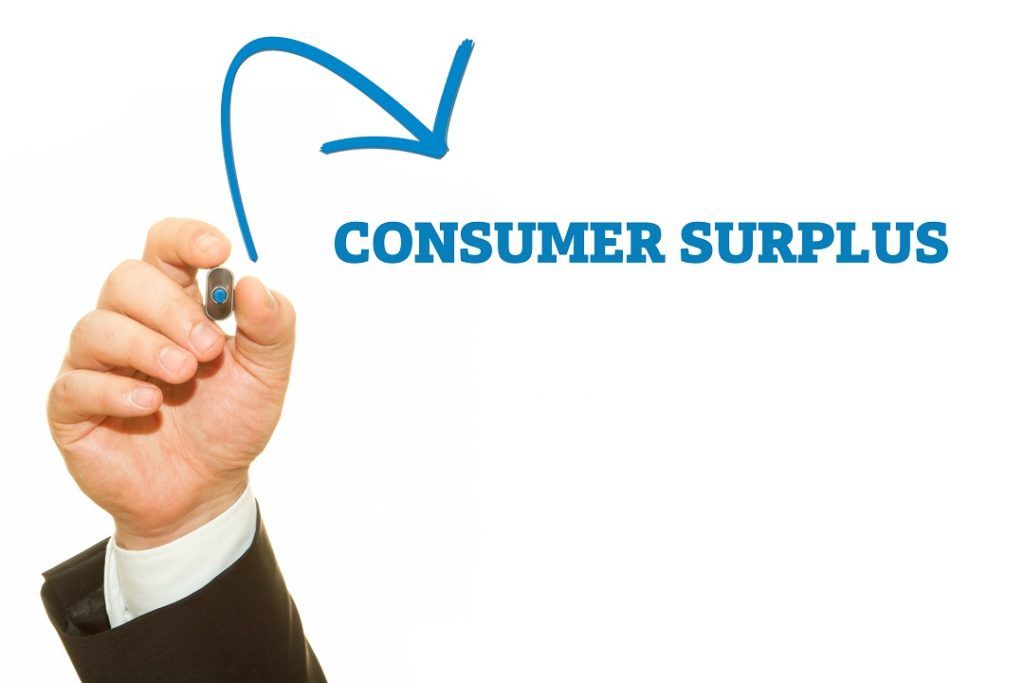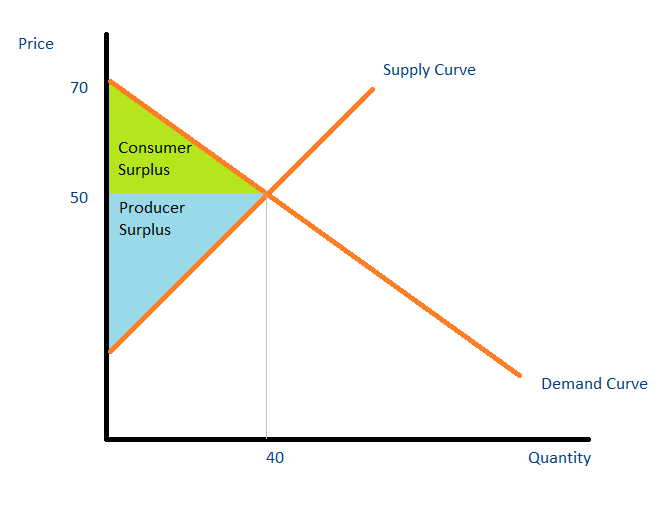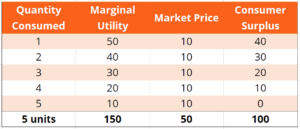Term That Describes What Happens After the Sale to Ensure the Consumers Buy Again
What is Consumer Surplus?
Consumer surplus, also known every bit buyer's surplus, is the economic measure out of a customer's backlog do good. Information technology is calculated by analyzing the difference between the consumer'south willingness to pay for a production and the actual cost they pay, also known as the equilibrium toll. A surplus occurs when the consumer's willingness to pay for a product is greater than its market place cost.

Consumer surplus is based on the economical theory of marginal utility, which is the additional satisfaction a person derives by consuming one more unit of a product or service. The satisfaction varies by consumer, due to differences in personal preferences . Co-ordinate to the theory, the more of a product a consumer buys, the less willing he/she is to pay more for each additional unit due to the diminishing marginal utility derived from the product.
Calculating Consumer Surplus

The indicate where the demand and supply meet is the equilibrium price. The area above the supply level and beneath the equilibrium price is called product surplus (PS), and the area beneath the need level and above the equilibrium price is the consumer surplus (CS).
While taking into consideration the demand and supply curves , the formula for consumer surplus is CS = ½ (base) (tiptop). In our instance, CS = ½ (forty) (70-fifty) = 400.
Consumer Surplus and the Cost Elasticity of Demand
Consumer surplus for a product is nada when the need for the product is perfectly elastic. This is considering consumers are willing to lucifer the cost of the product. When demand is perfectly inelastic, consumer surplus is space because a change in the price of the production does non affect its demand. This includes products that are basic necessities such as milk, water, etc.
Demand curves are usually downwards sloping because the need for a production is usually affected past its toll. With inelastic need , consumer surplus is high because the demand is not affected by a change in the price, and consumers are willing to pay more for a product.
In such an example, sellers will increase their prices to convert the consumer surplus to a producer surplus. Alternatively, with rubberband demand, a small change in cost will issue in a large change in demand. Information technology volition result in a low consumer surplus as customers are no longer willing to buy as much of the product or service with a modify in cost.
Law of Diminishing Marginal Utility
According to economist Alfred Marshall, the more you lot consume a certain commodity, the lower the satisfaction derived from each additional unit of consumption. For example, if you purchase one apple for $0.50, yous are not willing to pay more for the 2nd apple. At the same time, the utility derived from consuming the 2nd apple is lower than it was for the first apple. The concept is described in the table below:
According to Alfred Marshal: Consumer Surplus = Full Utility – (Price x Quantity)

Assumptions of the Consumer Surplus Theory
1. Utility is a measurable entity
The consumer surplus theory suggests that the value of utility can exist measured. Under Marshallian economics, utility can be expressed as a number. For instance, the utility derived from an apple is 15 units.
2. No substitutes bachelor
At that place are no bachelor substitutes for whatsoever commodity under consideration.
three. Ceteris Paribus
It states that customers' tastes, preferences, and income do not change.
4. Marginal utility of coin remains abiding
It states that the utility derived from the income of a consumer is constant. That is, any change in the amount of money a consumer has does non alter the corporeality of utility they derive from it. It is required because without it, money cannot exist used to measure utility.
5. Police force of diminishing marginal utility
It states that the more a production or service is consumed, the lower the marginal utility is derived from consuming each extra unit.
6. Contained marginal utility
The marginal utility derived from the production being consumed is not affected by the marginal utility derived from consuming similar goods or services. For example, if you consumed orange juice, the utility derived from it is not afflicted by the utility derived from apple juice.
Conclusion
Consumer surplus is a skilful manner to mensurate the value of a product or service and is an important tool used by governments in the Marshallian Organisation of Welfare Economics to codify tax policies. It can be used to compare the benefits of two commodities and is frequently used by monopolies when deciding the cost to charge for its production.
Additional Resources
Thank you for reading CFI's guide to Consumer Surplus. To proceed learning and advancing your career, the following CFI resources will be helpful:
- Amass Supply and Need
- Normal Goods
- Purchasing Power Parity
- Supplier Power
Source: https://corporatefinanceinstitute.com/resources/knowledge/economics/consumer-surplus/
0 Response to "Term That Describes What Happens After the Sale to Ensure the Consumers Buy Again"
Postar um comentário